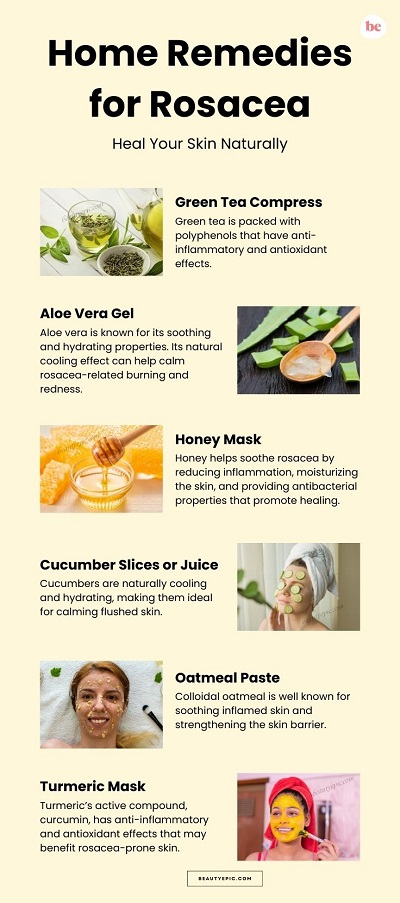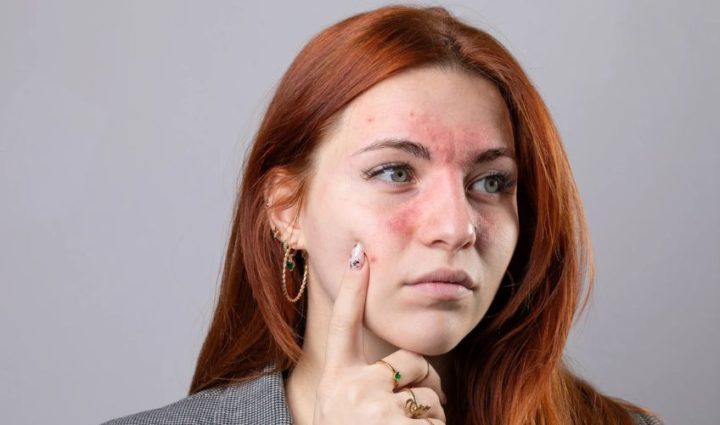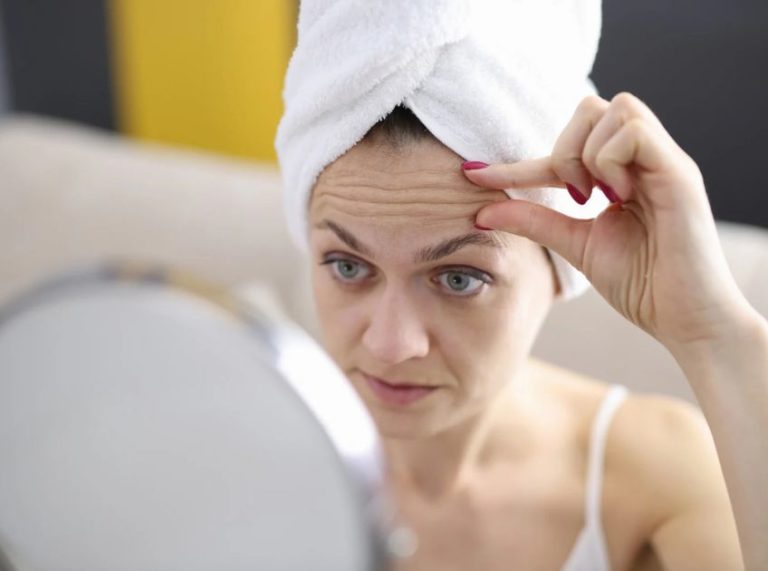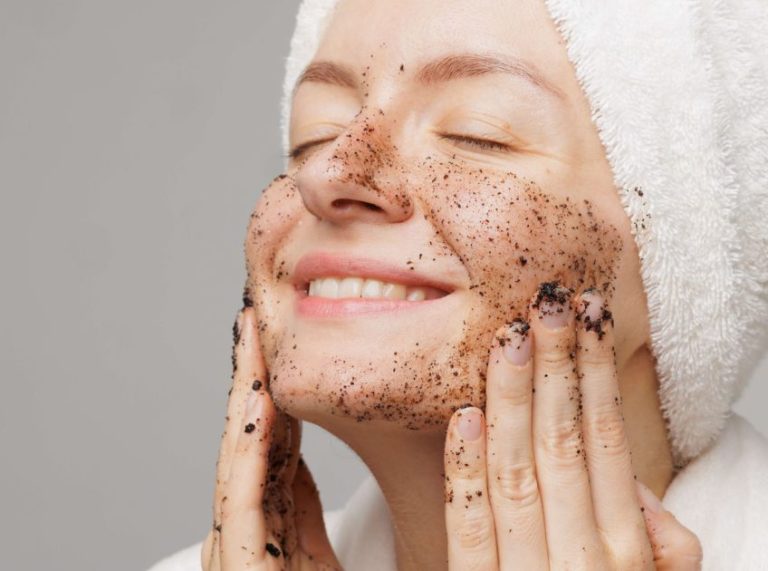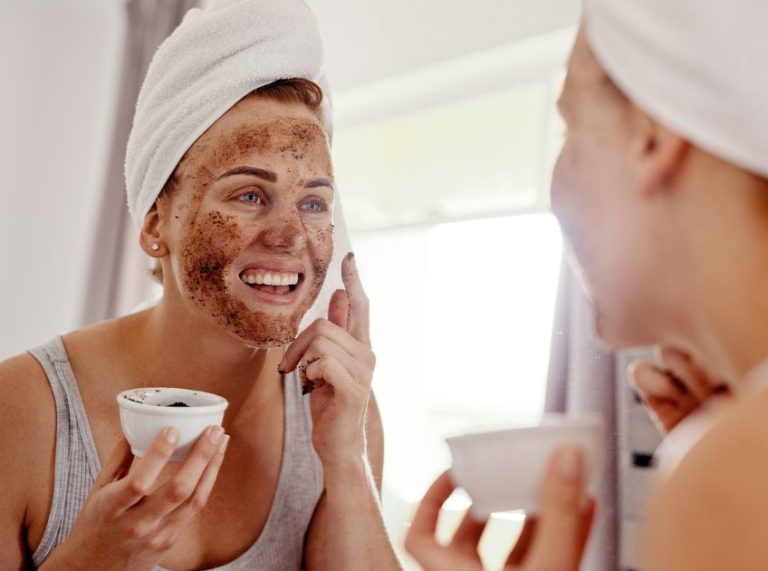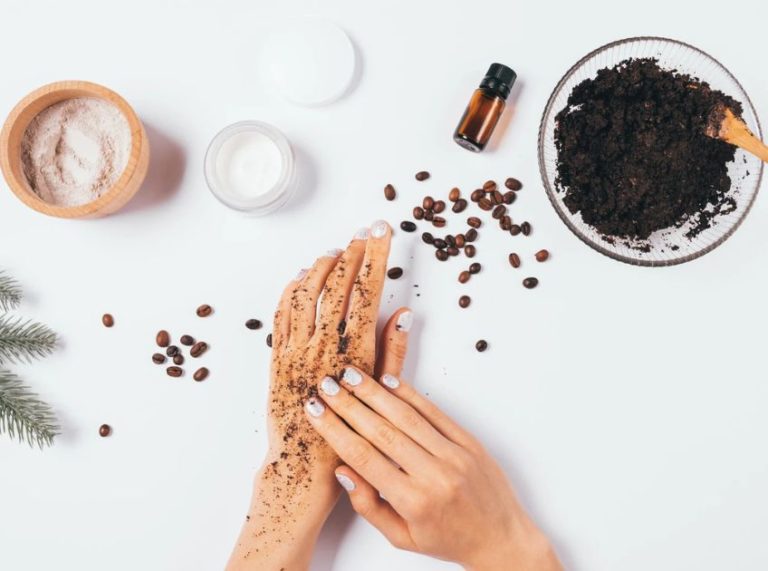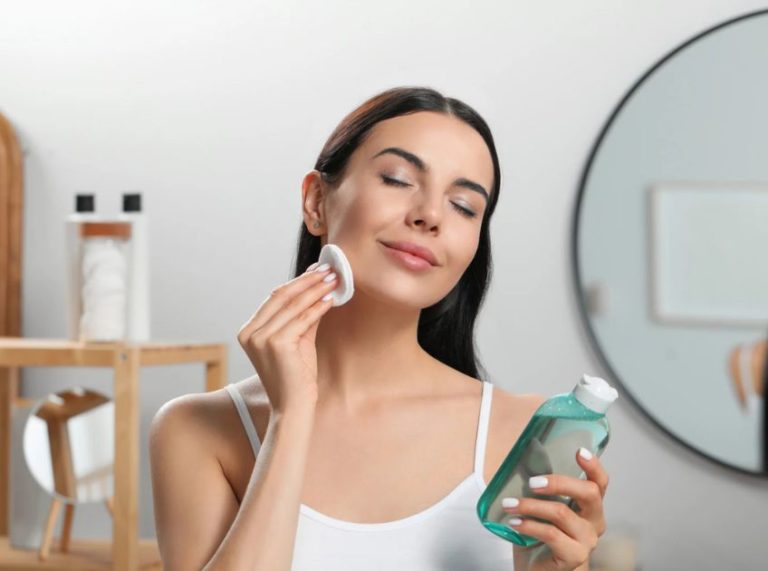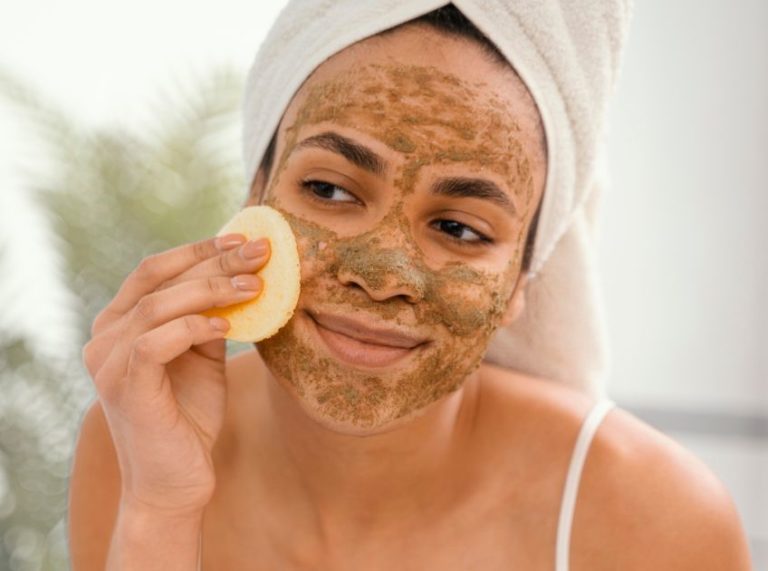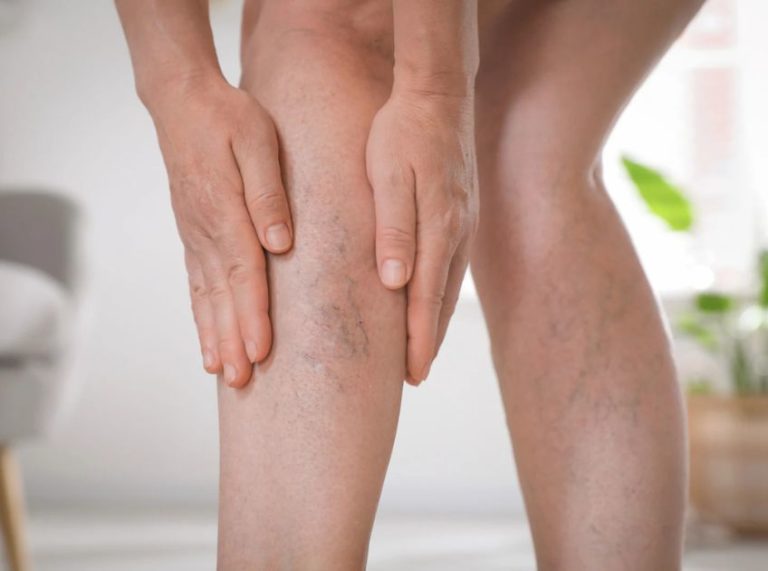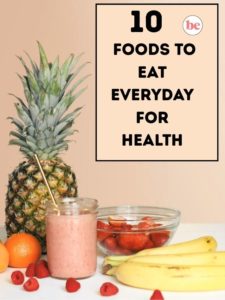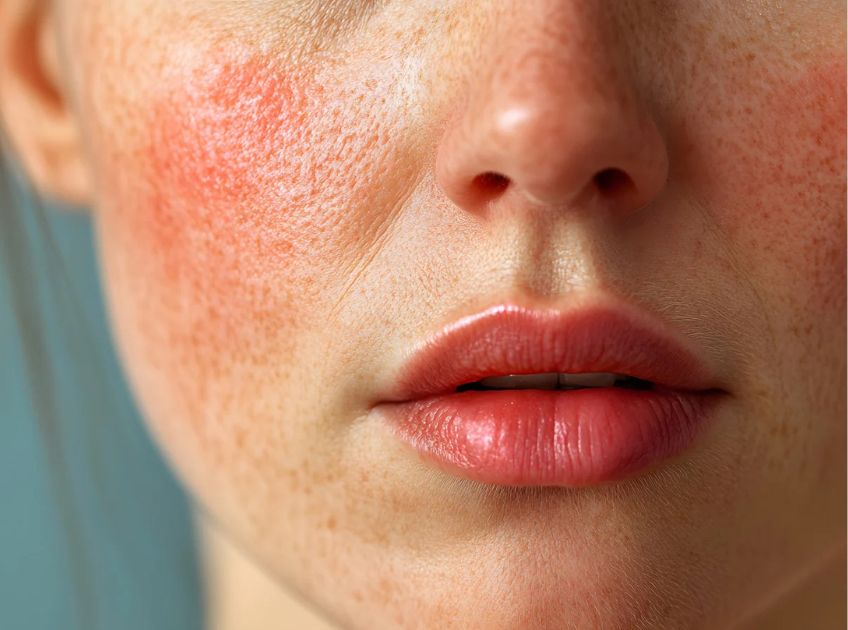
Important: This article is for informational purposes only. Please read our full disclaimer for more details.
Rosacea is a chronic skin condition that primarily affects the face, causing redness, flushing, visible blood vessels, and sometimes acne-like bumps. While its exact cause is unknown, factors such as genetics, overactive immune responses, and environmental triggers are believed to play a role.
According to the American Academy of Dermatology (AAD), rosacea affects more than 14 million Americans, though it is often underdiagnosed (1)(2). While medical treatments exist, many individuals turn to gentle home remedies to help calm symptoms, reduce flare-ups, and support overall skin health.
10 Gentle Home Remedies for Rosacea
1. Green Tea Compress
Green tea is packed with polyphenols that have anti-inflammatory and antioxidant effects. Studies published in the Journal of Drugs in Dermatology suggest that topical green tea extracts may reduce redness and irritation (3).
- How to use: Brew a cup of green tea, let it cool, and soak a clean cloth in it. Apply as a compress for 10 minutes.
2. Aloe Vera Gel
Aloe vera is known for its soothing and hydrating properties. Its natural cooling effect can help calm rosacea-related burning and redness.
How to use: Apply fresh aloe vera gel directly to affected areas twice daily. Choose pure gel without added alcohol or fragrance.
3. Honey Mask
Raw honey has antimicrobial and anti-inflammatory properties. A small clinical trial in Complementary Therapies in Medicine found that honey may improve symptoms in people with rosacea (4).
How to use: Spread a thin layer of raw honey on clean skin, leave for 15 minutes, and rinse with lukewarm water.
4. Cucumber Slices or Juice
Cucumbers are naturally cooling and hydrating, making them ideal for calming flushed skin.
- How to use: Place chilled cucumber slices on affected areas or dab cucumber juice with a cotton ball for 10–15 minutes.
5. Oatmeal Paste
Colloidal oatmeal is well known for soothing inflamed skin and strengthening the skin barrier.
How to use: Mix ground oatmeal with water to form a paste. Apply gently to the face, leave for 20 minutes, then rinse.
6. Chamomile Compress
Chamomile contains flavonoids with anti-inflammatory properties. However, since some people with rosacea are sensitive, patch-test first.
How to use: Brew chamomile tea, let it cool, and apply with a soft cloth for 10 minutes.
7. Licorice Root Extract
Licorice root contains glabridin, which reduces redness and irritation. A study in the Journal of Dermatological Treatment showed that topical licorice extract improved skin inflammation (5).
How to use: Use creams or serums containing licorice root extract, applying them twice daily.
8. Turmeric Mask
Turmeric’s active compound, curcumin, has anti-inflammatory and antioxidant effects that may benefit rosacea-prone skin (6).
How to use: Mix ½ teaspoon turmeric powder with yogurt or honey to create a mask. Apply for 10 minutes, then rinse thoroughly.
9. Cold Compress
A simple yet effective remedy, cold compresses reduce flushing by constricting blood vessels.
How to use: Wrap ice cubes in a soft cloth (never apply directly to skin) and apply for 5 minutes.
10. Gentle Moisturization with Oils
Natural oils such as jojoba oil and rosehip oil help strengthen the skin barrier without clogging pores.
How to use: After cleansing, apply 2–3 drops of oil to damp skin. Avoid heavy or comedogenic oils.
Beyond Remedies: Lifestyle Habits That Calm Rosacea
Home remedies work best when combined with healthy lifestyle adjustments. Since rosacea flare-ups are often triggered by external and internal factors, small changes can make a big difference:
- Sun protection: UV rays are a major trigger. Use a broad-spectrum mineral sunscreen (zinc oxide or titanium dioxide).
- Diet awareness: Spicy foods, hot drinks, alcohol, and processed foods may worsen rosacea. Keep a food journal to identify triggers.
- Temperature control: Avoid hot baths, saunas, and extreme cold exposure.
- Stress management: Stress is a well-known trigger. Yoga, meditation, and regular exercise can help reduce flare-ups.
- Gentle skincare: Use fragrance-free, non-irritating cleansers and moisturizers. Avoid scrubs, harsh exfoliants, and products with alcohol.
Scientific Backing for Natural Approaches
Green tea polyphenols: Research shows they reduce inflammation and protect skin from oxidative stress (7).
- Aloe vera: Clinical studies confirm its role in hydrating and soothing sensitive skin (8).
- Probiotics (dietary and topical): Emerging evidence suggests they may balance the skin microbiome and reduce inflammation in rosacea patients.
These findings reinforce the idea that while natural remedies aren’t cures, they can support medical treatments and improve the quality of life for rosacea sufferers.
Frequently Asked Questions (FAQ’S)
1. Can rosacea be completely cured with home remedies?
A. No, rosacea is a chronic condition. Home remedies can help manage symptoms and reduce flare-ups, but don’t provide a permanent cure.
2. Are natural remedies safe for all skin types?
A. Most remedies are safe, but people with sensitive skin should always perform a patch test before applying anything new to the face.
3. Should I stop using prescription treatments if I try home remedies?
A. No. Home remedies should complement—not replace—medical treatments. Always follow your dermatologist’s advice.
Rosacea can be challenging, both physically and emotionally. While there is no one-size-fits-all solution, natural remedies such as aloe vera, green tea, and oatmeal can provide meaningful relief when used consistently. Coupled with lifestyle changes like sun protection, mindful eating, and stress management, these remedies empower you to take control of flare-ups naturally.
